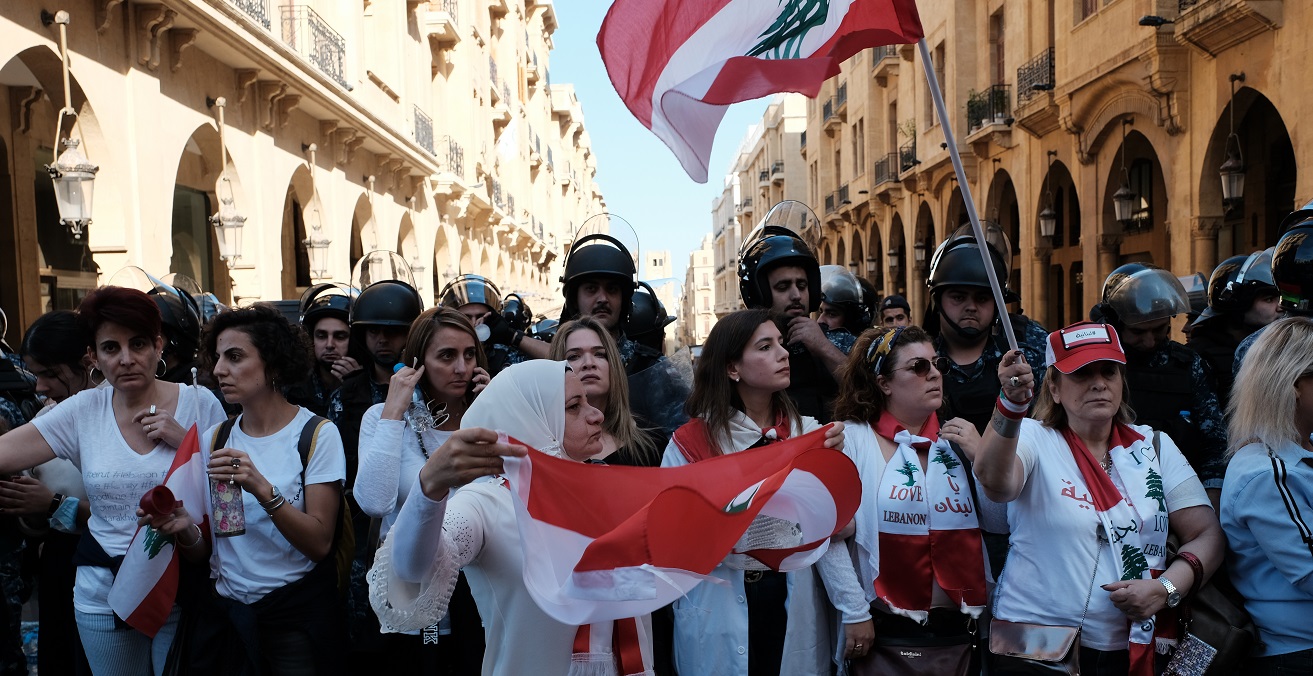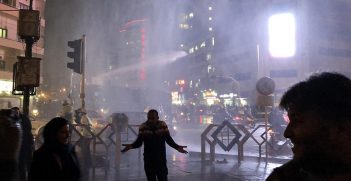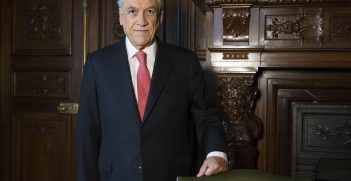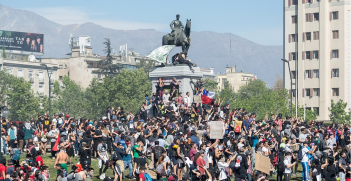Lebanon’s October 2019 Revolution: A (Re)-Dreamed National Reconciliation?

After 30 years of deep-seated sectarian differences and corruption, the Lebanese took to the streets on 17 October 2019 to reject the spread of nepotism and to reclaim their rights as citizens of a state. Such unity reflects a new conception of a Lebanese identity.
The notion of nation-states and national identity has developed over the centuries. One of the fundamental notions of nationalism is the notion of the “social contract,” which dictates states’ responsibilities towards citizens and, correspondingly underscores the responsibilities of the citizens towards their state. Much of the discussion surrounding the social contract came under scrutiny in humanitarian intervention when states fail (purposefully or otherwise) to protect their citizens- a key factor in its responsibility towards them. However, the importance of this discussion sets in current times of traditional and non-traditional security threats.
The literature on post-colonialism is rich with a discourse of failed nation-states or the weakening of them to serve the interests of the colonial ruler. Arab states are to a great extent shaped by their colonial history. After the fall of the Ottoman empire in the First World War, Britain and France divided up the Middle East. In what became known as Sykes-Picot agreement, Britain took Jordan and Palestine, while France kept Lebanon and Syria. Lebanon gained independence in 1943, but its present structure and governance is still largely shaped by its colonial history.
This raises the question of whether the latest revolution that took place in Lebanon in October 2019 is a sign of a unified feeling of a national identity that Lebanese may have not yet experienced. If so, then what was about these demonstrations made this experience attainable? None of the previous demonstrations showed a unifying narrative that the present ones had. To answer these questions, it is necessary to look at 2019 revolution with a specific focus on the discourse surrounding the media coverage and the narratives of the demonstrators. This can help offer a new wave of collective narrative despite religious, political, and sectarian differences.
Because of the array of religions and sects in Lebanon, the power sharing formula has been set to reflect such varieties, resulting in an elite-dominated ruling class, political instability, nepotism, and sectarianism. This structure was consolidated in the 1943 National Pact and then reasserted in the 1990 Taif Accords. The Lebanese civil war illustrates of the failure of the power sharing formula. After 15 years of fighting amongst and across different religious and sectarian lines, the Taif Accords ended the war without addressing the power sharing formula already in place that gave sectarianism a bigger chance to grow and loyalty to leaders to become increasingly dominant. Hence, while the notion of political representation reflecting various different groups was achieved by dividing seats in parliament according to group, the political system served as an instrument for powerful leaders to exploit the economy.
On 17 October 2019, Lebanese took to the streets in a mass rally to protest the failure of the Lebanese government and its inability to present economic reforms. In an attempt to save the Lebanese economy from collapsing, the government sought to impose more austerity measures and more taxes to reduce its deficit. The Lebanese economy has a national debt of 150 percent of GDP and it continues to rise. The local currency is collapsing against the dollar and the unemployment rate has plummeted to 25 percent. This takes place where nepotism and corruption are widespread, and a scarcity in decent public services is deeply felt.
So, what has developed as a collective narrative of this revolution became suffering. This narrative is illustrated by media headlines such as “The transformative power of Lebanon’s revolution,” “Lebanon has suffered from Sectarians for far too long,” “Lebanon Protests unite Sects in Demanding New Government,” and “Lebanon protests: A country feeling reborn.” Hence the developing narrative becomes focused on the unifying element of this revolution and on a call for a re-imagined national identity that overtakes religious and sectarian differences, unifying citizens in their demands for a new political system that can fulfill the state’s obligations to provide public services and institutional structure. One demonstrator sorely stated, “For the first time ever there is real unity in the country and not a fake one like we’ve seen before. People are realising that a Christian living in extreme poverty is no different from a Sunni or Shia living in extreme poverty.” In this case, the idea of a community can be recreated, where the demonstrators framed their suffering within a united element that shaped or reshaped their identity as a Lebanese and not as a Christian, Muslim, or Druze.
The fragmentation of the Lebanese identity is not new. Geopolitically, Lebanon served (and still serves) as a battlefield for regional rivalries, such as in the Israeli-Palestinian conflict and more recently, the Iranian-Saudi rivalry. Additionally, these conflicts have been paralleled with alliances with major political parties in Lebanon, which then shaped these alliances into loyalties. In turn, these loyalties have become political identities. For instance, Hizbullah’s alliance with Iran has shaped its identity as an Iranian proxy and naturally, all Hizbullah members (and supporters) received the same branding. On the other hand, the strong economic ties between Saudi Arabia and Future Movement, a major Sunni party, have shaped its loyalty and political identity to Saudi Arabia and Sunni Islam rather than to Lebanon. Interestingly, both sides viewed the other as the outsider. These loyalties and re-fashioned political identities were instrumental in the Syrian war and the participation or support of Lebanese people, to the extent of taking an active role in the conflict. More importantly, with more than 1.5 million Syrian refugees, over 500,000 Palestinian refugees, 6000 Iraqi refugees, and many others, in a country that suffers from deep national fragmentation, the question of political identity vis-à-vis national identity becomes more important than ever.
An important element in building or creating a community is the feeling of belonging to a certain group. There are various ways in which individuals can feel a connection with the group or its members. These include shared language, history, or religion. Some non-conformity factors also play a big role in creating a shared identity amongst different members across the globe. Media is one of the platforms where these connections are built or created. Thus, the notion of “belonging” has evolved in the globalised world. In Lebanon’s revolution, the feeling of “comradeship” and “fraternity” has become an echo of the shared suffering of the Lebanese people who now share a deeper connection with fellow citizens of different religions and sects.
What has been instrumental in this revolution, in comparison to previous ones, was its ability to be unifying in its horizontal nature. Demonstrators from different areas, political factions, and religious beliefs united under the banner of better living conditions. This banner then served as a unifying element in the feeling of comradeship and a platform for a shared narrative. Consequently, that narrative that help Lebanese come closer to a national reconciliation or a re-imagined identity that has been elusive due to war, conflict, and political rivalries. The question now is whether the Lebanese people can negotiate this reconsidered identity after the revolution achieves its goals.
Dr Mariam Farida is an Academic Learning and Language Facilitator and UNSW Middle East expert. Dr Farida has been awarded her PhD in Security Studies and Criminology. Her research interests include Middle East politics, Non-state groups, Global Security, Terrorism, Counterterrorism operations, and National Security. She is also the author of Religion and Hezbollah: Political Ideology and Legitimacy (Routledge, 2020).
This article is published under a Creative Commons Licence and may be republished with attribution.





